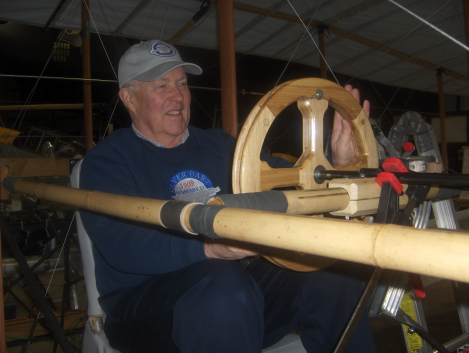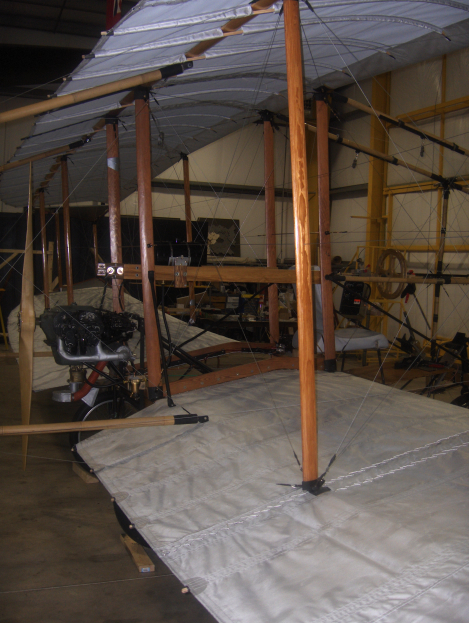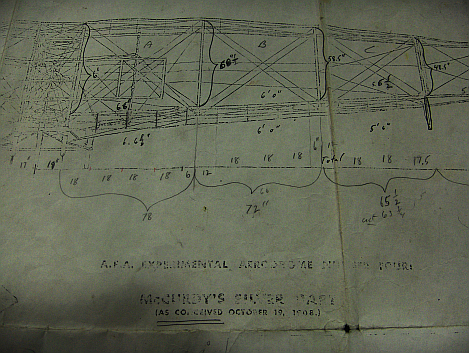
Round Trip
By Andrew Joseph (story and photgraphy)
General Aerospace Aerospace design transportationIn anticipation of the centennial of the Silver Dart's first flight, a group of volunteers have gathered in Welland, Ont., near Niagara Falls to build a replica of the plane to fly at the ceremonies in Baddeck, N.S., on Feb. 23, 2009.
In anticipation of the centennial of the Silver Dart’s first flight, a group of volunteers have gathered in Welland, Ont., near Niagara Falls to build a replica of the plane to fly at the ceremonies in Baddeck, N.S., on Feb. 23, 2009.
After tracking down a copy of the original drawings of the Silver Dart, work began in the summer of 2004. While the idea was to stay faithful to the original drawings, the modern day AEA 2005 discovered it’s own fair share of engineering concerns and was forced to modify their plane design accordingly, especially when considering safety features for the pilot.
The 2009 version of the craft has been manufactured from Sitka spruce, bamboo and ash for the fuselage and horizontal wing structural spars, vertical struts, wood ribs and strut jackets—plus the addition of some wire, steel tubing, modern wing fabric coverings and good quality tape.
The replica has, for added strength, utilized only approved aeronautical nuts and bolts to hold it all together. Along with seat belts—yes, those magnificent men and their flying machines truly did fly by the seat of their pants—brakes have also been added via foot pedals that on the original simply acted as a footrest.
In the original Silver Dart, The all-important ailerons were worked via a yoke around McCurdy’s neck and operated with a shrug. The present day replica incorporates a steering wheel and a pulley system attached to the “little wings.”
Along with adding a set of electrical controls for the pilot to monitor engine speed, the replica is using a different engine to ensure the plane has the proper strength to get airborne. The Lycoming 0-145-flight engine produces 65-horsepower, was donated by a group member and sent to Toronto to be thoroughly tested by Leavens Aviation.
Of course, alterations to the plane for safety reasons have also caused its fair share of engineering headaches, too. Not only is the COG (center of gravity) different from its predecessor, but its heavier too. As well, during the first trial engine test a mere month to its scheduled flight in Nova Scotia, it was discovered that the engine was not spinning the propeller fast enough to get the ship airborne. During Design Engineering magazine’s visit to the hangar, a volunteer took up a hand saw and cut away two-inches of propeller for each of the two ends. Problem solved.
Recent wind tunnel tests on the replica have indicated that the nose wheel needed to be reduced in diameter to bring about a five-inch drop at the front of the plane—a reduction that is expected to provide more lift.
Among the many volunteers of have worked on the replica, a partial list of the AEA 2005 includes:
Jack Minor, who conceived of the idea;
Gilles Levesque, who has lent the group use of his hangar;
Doug Jermyn, a thirty-six year veteran flight test and developmental engineer from Pratt and Whitney Canada who has assumed a leadership role.
Raymond Larson, an engineer with Atlas Steel;
Also: Carol Jermyn, Gerald Haddon; Ray Larson; Ed Russell; Jaro Petruck; Don Feduck; and Irene Manuel who stitched all of the fabric wing panels while on chemotherapy for cancer.
Bjarni Tryggvason, a Canadian astronaut who served as a payload specialist on the Space Shuttle Discovery STS-85, will pilot the craft during the centenial celebrations.
Photo Gallery (3 images)



